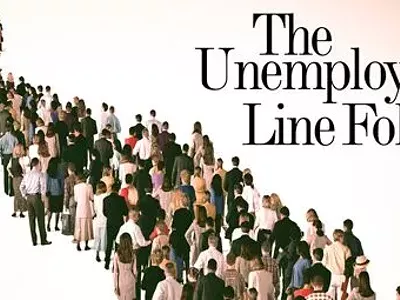Mulenga Harangua was leading me into the old, abandoned Herman Kiefer Health Complex. I wasn't sure exactly why I was there but Mulenga insisted. And when Mulenga insists I listen.
He led me behind a jumble of bushes and pushed aside a couple of boards leaning against the side of the building to reveal an open window. After we climbed through, Mulenga turned on a small flashlight as he led me through a maze of hallways and stairs. The place has only been shut down for two years so there wasn't much in the way of decay on display. Finally we came to a room that Mulenga turned into.
"Wait here a minute by the door," he said after we entered.
I heard him rustling around. Then a click and a lantern lit up the room. Mulenga stood there with his arms crossed against a puffed up chest. He had on a wig or something with braids that hung below his waist.
"What do you think?" he asked.
"I think you look like Stevie Wonder on a bad hair day," I said. "What the hell is that?"
"It's one of my racist symbol reclamation projects," Mulenga said. "It's made out of a Confederate battle flag."
"What?"
"A Confederate battle flag, you know, like the one that Dylann Roof took pictures of himself holding before he went into that church and killed all those people in South Carolina."
"That doesn't look anything like a flag," I said.
"That's because I reclaimed it," Mulenga said. "I rip them into long, thin shreds. Then I dye them black in that tub over there." Mulenga pointed at an old tin washtub across the room. "Then I braid them African style and fashion them into a wig. It's kind of ironic if I do say so myself — turning that racist symbol into something that looks like dreadlocks."
"Hmm," I murmured as I surveyed the room a little more closely. "So you can sew."
"It's a little something I picked up along the way," Mulenga said. "When you don't have money to go buy new things you have to learn how to repair what you have."
"I never knew you could sew."
"Well," Mulenga said, "I can't let too much personal information out there. You know how I like to keep everything on the down low."
"You got any other secrets to tell me?"
"Nothing I'm giving up right now," Mulenga said as he reached into a box and pulled out what looked like some kind of doll.
I looked closer and saw it resembled one of those fancy rich white ladies from Gone With the Wind — long dress and a bustle and hair with ringlets hanging down. The skirt of her dress was made of Confederate flag material. Mulenga flipped back a piece of cloth with a star on it. Underneath was a jet black baby suckling a white breast.
"I just flipped the script for all the black mothers who had to give their breast milk to the slave owner's baby while their own children went hungry," Mulenga said. Then he pointed to a statue about 3 feet tall. It looked like one of those yard figurines of the guy in the red outfit with the ring in his hand to tether a horse. Those figurines are usually black but this one's face was painted white.
"I need to decide whether to put the Emancipation Proclamation in that upraised hand or a plate of chitlins," Mulenga said.
I had to chuckle at that one. "I think you should go with the chitlins. The smell should be bad enough to chase all the white people out of the room. Where do you get this stuff?"
"You'd be surprised what I find in some of these raggedy, falling down houses," Mulenga said. "And since the Emanuel church massacre, people are getting rid of Confederate stuff that they had, even around here. I found a Stars and Bars gun holster, and even a bra and panties. I'm not sure what to do with them."
"So you collect this stuff like that guy in Spike Lee's Bamboozled," I said. "He had all those Jim Crow-era figurines and stuff."
"I don't collect this stuff," said Mulenga. "I repurpose it. I turn black mammies into white mammies. Wait till you see the painting of the new Aunt Jemima that I'm working on."
"You ought to hook up with Rachel Dolezal, the white woman who has been passing for black," I said. "She probably has some unique insight into that flipping the script on race stuff."
"I ain't mad at her," Mulenga said. "If she wants to be a soul sister that's her business — maybe I should send her one of my wigs. But I got to say there are plenty of black folks who have been passing for white, Puerto Rican, Pacific Islanders, whatever."
"One thing Rachel got right is that it's not necessarily skin tone that defines being black," I said. "It's that kinky hair. Having her hair like that led people to believe her story although her skin tone was about as European as you can be."
"Madame C.J. Walker knew that," Mulenga said. "She was the first black female millionaire in this country because she created and sold hair straightening products. Black people bought that stuff as quick as they could get it."
I looked around the room. "I don't think you'll get to be a millionaire with this stuff, although you might get lynched."
Mulenga shoved a box at me. "Here, help me carry this out. Now that they're going to redevelop this complex I have to get it out of here."
Larry Gabriel writes the Stir It Up and Higher Ground columns for the Detroit Metro Times and is editor of The American Cultivator.







